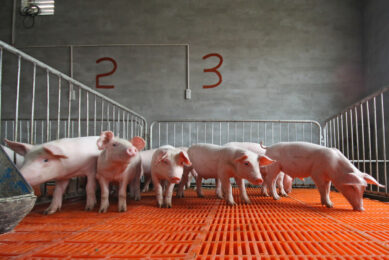China to maintain self-sufficiency in food production

Despite an expected increase in the country’s food imports, China will maintain self-sufficiency in its main food crops, including wheat and rice, in the coming decade, according to the Chinese Agricultural Outlook report (2014-2023) released last week.
The report, released by the Agricultural Information Institute of the Chinese Academy of Agricultural Sciences, predicts that China’s annual output of three main crops – wheat, rice and corn – will hit 578 million metric tons in 2023, still keeping a high self-sufficiency rate.
By then, about 596 million tons of crops will be needed to feed the nation, data from the report showed. The United Nations has forecast that China’s population will reach 1.4 billion by 2023.
“Chinese can hold the rice bowl in our own hands in the coming decade, due to the strong government policy support and technological innovation,” Xu Shiwei, director-general of the institute, said at the 2014 China Agricultural Outlook Conference in Beijing on Sunday. The two-day conference attracted more than 400 domestic and overseas officials and experts.
Xu added that the central government’s investment increased to more than 1.2 trillion yuan ($195 billion) in 2013, an average annual increase of 14% since 2003, and that the support policy will continue.
The nation’s grain output exceeded 602 million tons in 2013, the 10th consecutive year of increased grain harvests, according to the Ministry of Agriculture. The strong government support and investment will help maintain the trend, the report said.
For instance, annual output of rice is expected to rise to 204 million tons in 2023, surpassing domestic demand, which will hit 203 million tons, according to the report. Wheat output is expected to reach 127 million tons in 2023, and domestic demand will grow to 128 million tons, maintaining the self-sufficiency rate at 99%, the report said. Corn output may continue to grow by an average annual rate of 1.3% over the next decade, reaching 247 million tons, it said.
Raed Safadi, deputy director of the Trade and Agriculture Directorate at the Organisation for Economic Cooperation and Development, congratulated China for its success in the agricultural sector over the past several decades. He said the rapid growth of urban population and rising incomes in China could bring changes to the country’s food demand patterns, with increasing consumption of meat, eggs and milk.
The report also foresees the change, predicting that the country’s meat imports might rise modestly, with pork imports reaching 2.5 million tons in 2023, rising 40% over the next 10 years. Annual sugar demand will increase to 18 million tons by 2023, with an annual increase of 2.8%, the report said.











